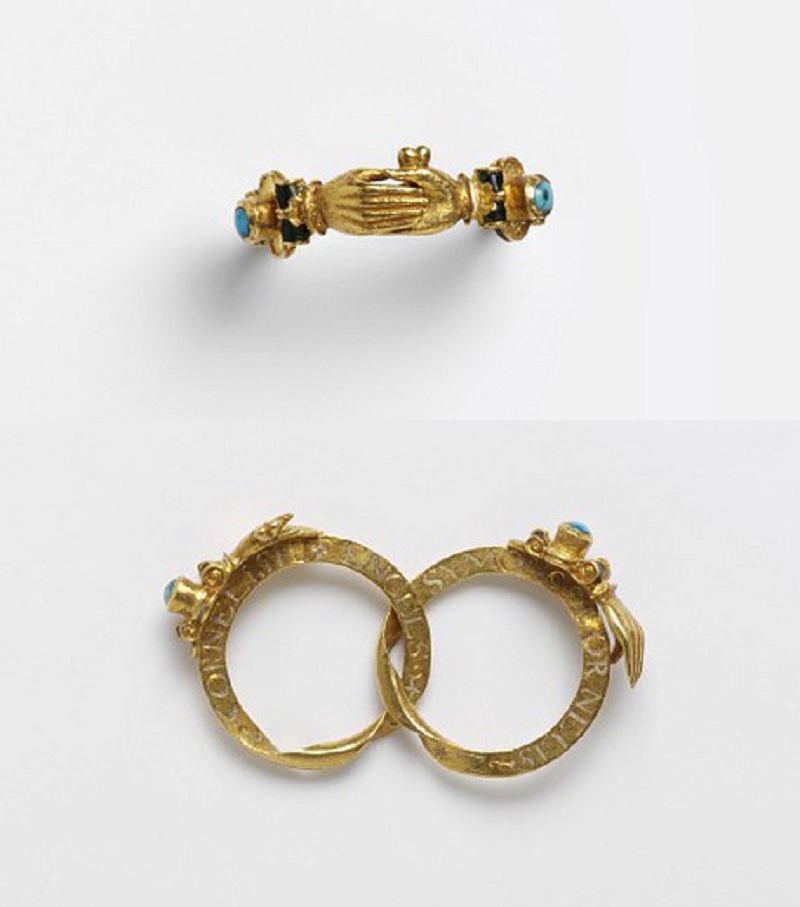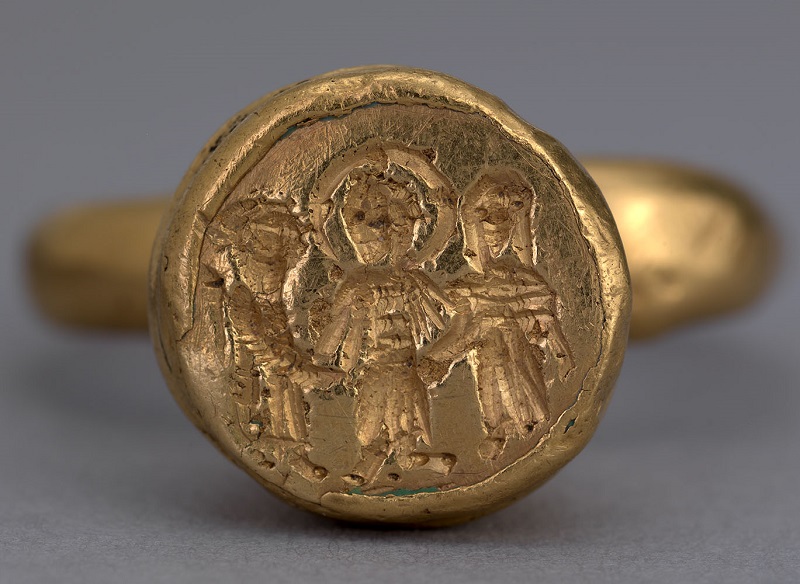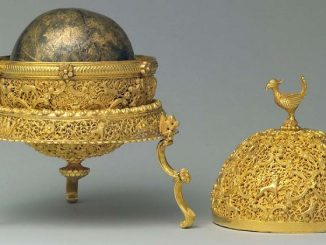6th – 7th centuries
This Eastern Mediterranean circular wedding ring, also early Byzantine, was auctioned by Macdougall’s Fine Art Auctioneers in 2010. This is a wonderful specimen that allows the observer to see the roughness of the engraving techniques used at the time.
9th – 11th centuries
This ring was unearthed in York, England, where a number of Viking items have been discovered in recent years. In 866, Norse armies invaded the City of York and several invasions of England followed. It was not until the Battle of Stamford Bridge in 1066 that the Vikings were successfully repelled. The ring can be reliably traced back to those years between 866 and 1067 AD.

12th-13th centuries
This simple ring is an excellent example of an Eastern European wedding ring from the 12th or 13th century. The gold stirrup ring may have been used as a wedding ring during this time period.
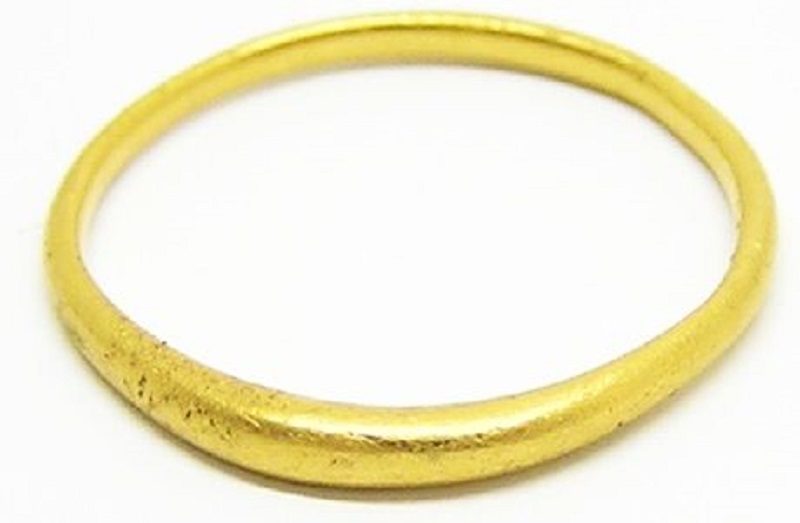
14th/15th century
The custom of giving wedding rings in Jewish culture dates back to as early as the 7th or 8th century. While most Jewish wedding rings have the good luck inscription “Mazal Tov” in Hebrew, This rare 15th century Jewish Gothic wedding ring was crafted with a house. Sometimes called the “house ring,” the house symbolizes the couple’s marital home and may also represent Solomon’s Temple in Jerusalem.
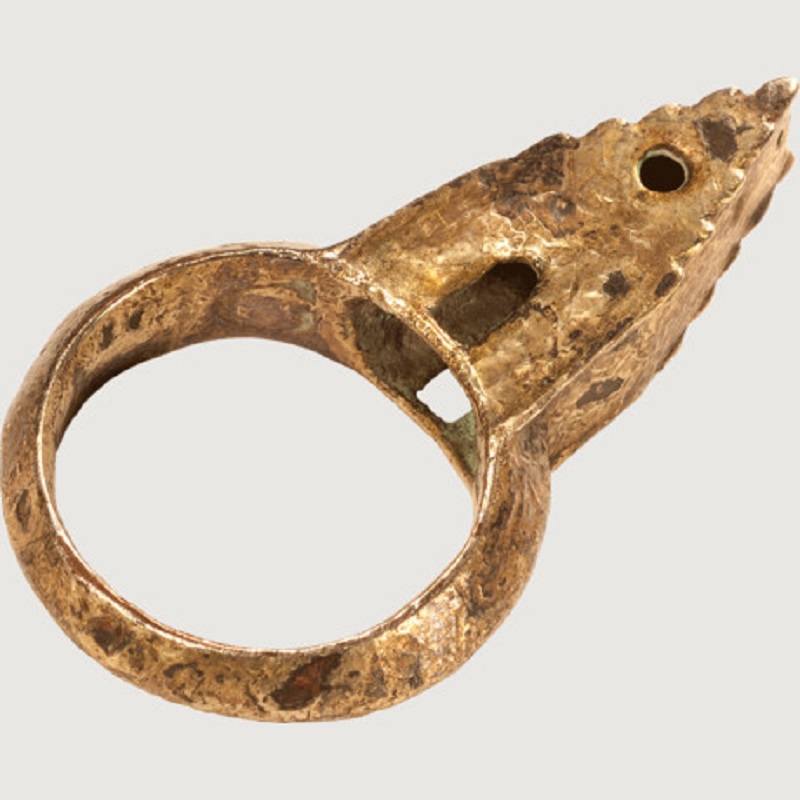
14th century (before 1349)
This ring was discovered in the Erfurt Treasure in 1998. The Erfurt Treasure included items hidden by a Jewish man (believed to be Kalman von Wiehe). This was the time of the “black death” and the Jewish community was partly blamed for the epidemic, forcing many Jews into hiding.
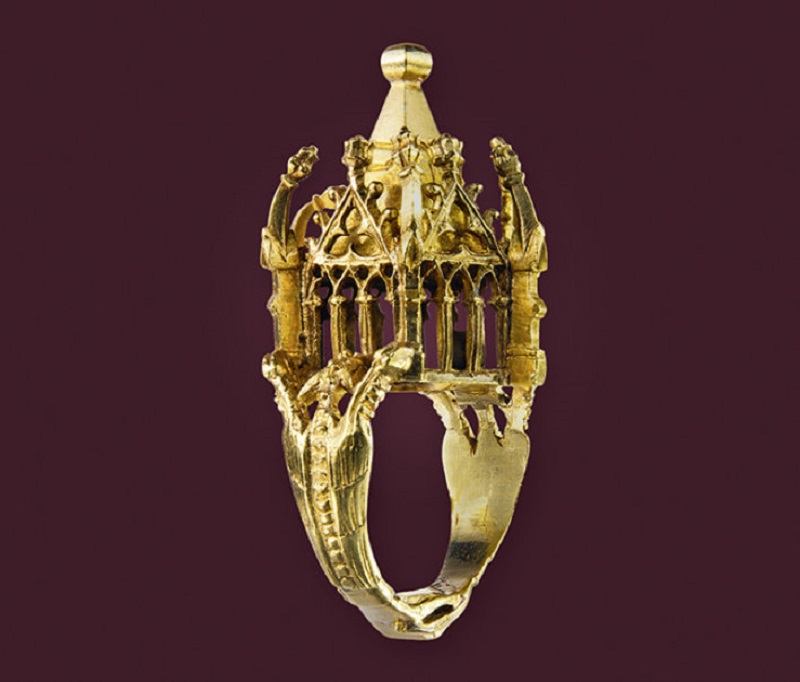
15th century (circa 1470)
Posy rings became popular during the Renaissance. Their name comes from the inscription or “prose/poem” that can be found on either side of the ring. From brief sayings about love and affection to religion and nature, Posy rings give owners the opportunity to own something unique.
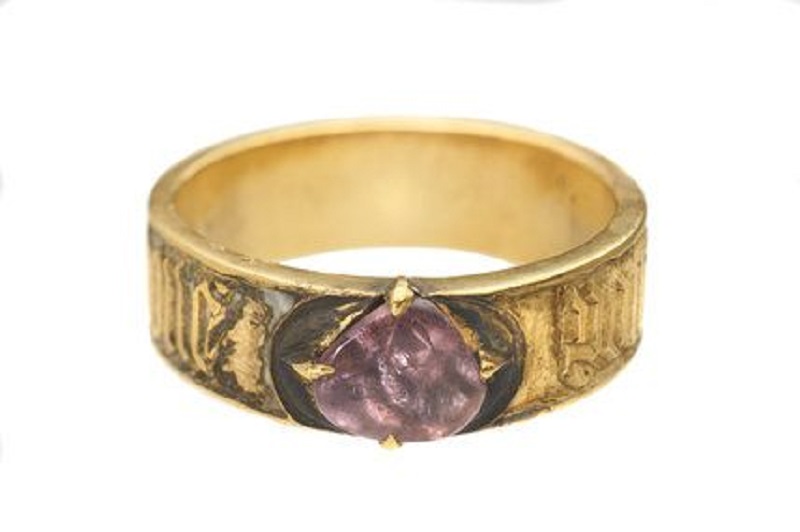
Gimmal rings of the 16th – 17th centuries
became popular around the same time as posy rings. However, a gimmal ring is a puzzle ring consisting of two or three pieces linked together to form a wearable ring. The ring below shows two hands clasped together as the piece is put together, and this design is known as a “fede” ring. The origin of the ring is traced back to the Netherlands around 1575-1650.
